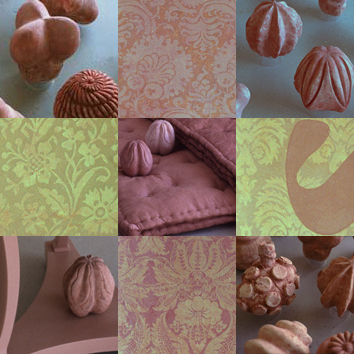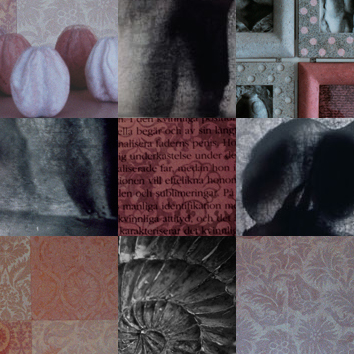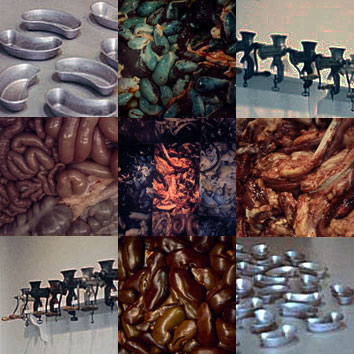


MEAT TEAM TAME MATE
The origin of this exhibition is to be found in its three-dimensional pink concrete shapes. They developed from clay through plaster cast forms out of my desire to work with something pleasurable; something attractive. The denomination Object of desire therefore seemed appropriate. This led me into the field of Psychology were I found Margaret Mahler’s classical work from 1975, The psychological birth of the child. I cite Mahler in one of the wall objects because her negative views on the process of individuation in the little girl quite chocked me, and I wanted to use it as a ground for debate. I later realized that Mahler could be seen as a right-minded Freudian whose position is often questioned today.
The Freudian heritage with primarily the idea of the penis envy is more variedly expressed, as I found, by Melanie Klein in Love, Guilt and Reparation (1921-1925). I cite her views on the subject in another of the wall objects.
After a while it became evident that my work developed in two different directions. On one hand there was the Objects of desire with their relative innocence and the soothing patterns of the Torn Rosa paintings, and on the other there was a feeling of violent revolt against what I experienced as an imprisoning female heritage. I channelled this revolt through photographic prints of mutilated inner organs and body parts shot at a pig slaughterhouse that I visited. I found these violent images of massacred dead flesh necessary in order for me to convey the emotional and theoretical turmoil that was uncovered. Another citation I used was found in Catrine and Justice (1990) by Hanna Olsson. Its descriptions of the macabre scenes from an infamous trial in Stockholm about the mutilation of a prostitute's dead body seemed to me to meet up in intensity to Melanie Klein’s descriptions of the naturally felt uproar of self-assertion expressed by the infant child against its’ parents. The connection I make between the two is that if the natural needs of small children are ignored and denied their suppressed wells of rage might hit back violently later on in life.
The theme of Sleeping Beauty, (or as it is called more appropriately in Swedish; Torn Rosa) which had me so absorbed in painting these patterns of floral pinks and creams, where did it stem from? I found answers in an anthropological study by Yvonne Verdier called The washerwoman, the seamstress, the cook. Descriptions of the rites of passage among teenage girls in France in the beginning of the 20th century clearly mirror the exact content of the folk fairytale of Sleeping Beauty. It was common knowledge that these rites were necessary to help the hormonally temperamental teenage girls passing from puberty into womanhood. I realized reading this, that Torn Rosa was a more fitting title than I had imagined.
Julia Kristeva, who I also cite in one of the wall objects, has contributed new aspects to the Freudian heritage by putting more emphasis on the mother as the child’s main object of desire or phallus. She also emphasizes the abhor or abject of their relationship.
This work was shown in 1994 at Gallery Bengt Adlers in Malmö and in 1995 at Värmland Museum in Karlstad, Sweden. Read Pontus Kyander's review of the exhibition under ARCHIVE in the heading above.
